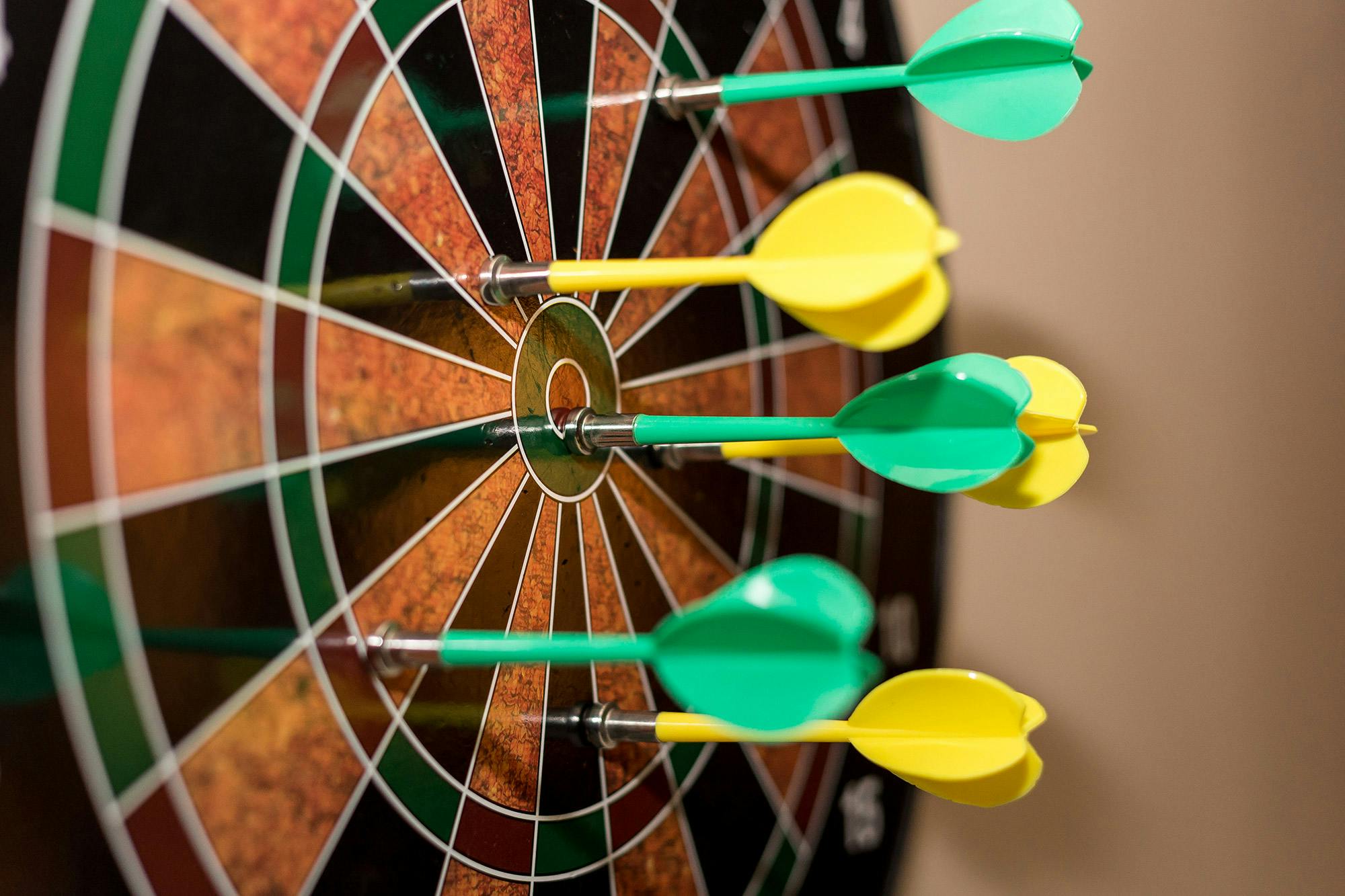Be Intentional with Your Connections (Or They Won’t Happen)
“You go to work, smile at people, make small talk, but deep down it feels like you’re just going through the motions. You answer ‘I’m good!’ automatically, even if you feel like you’re just floating through the week. Friendships don’t feel as deep as they used to. Family is busy. Everyone’s just… surviving.”
This sentiment struck a chord with me because it describes what I’ve come to recognize as an epidemic of disconnection in our modern world.
Many of us are feeling a profound loneliness that’s difficult to articulate.
It’s not always the dramatic, obvious kind of loneliness. It’s subtler, like a background hum that you only notice when everything else goes quiet.
The Silent Epidemic of Modern Loneliness
Research confirms what many of us feel intuitively: loneliness is on the rise.
According to a 2023 Surgeon General’s Advisory, about half of U.S. adults reported experiencing measurable levels of loneliness. This was before the pandemic, which only worsened the situation.
But why? We’re more connected than ever before through technology. We can instantly message friends across the globe, we have hundreds of social media connections, and we can video chat at a moment’s notice. So why do we still feel alone?
The answer lies in the difference between being connected and feeling connected. Most of our current connections are convenient but frequently shallow.
The Changing Landscape of Social Connection
Remember when:
- friends would drop by unannounced?
- neighborhood kids played together after school without scheduling playdates?
- families regularly gathered for meals without checking everyone’s calendar first?
- conversations happened organically rather than through a screen?
These spontaneous connections have largely disappeared from our social landscape. What happened?
Several factors have contributed to our current state of disconnection:
- Busy schedules: many adults juggle multiple responsibilities – work, family, household management (leaving little time for social connection);
- Geographic mobility: unlike previous generations, we often live far from family and childhood friends;
- Digital distractions: we spend hours scrolling through our social media rather than engaging in meaningful conversation;
- Cultural emphasis on independence: our society celebrates self-sufficiency sometimes at the expense of interdependence;
- Decline in community spaces: from religious organizations to civic clubs, many traditional gathering places have seen declining participation.
The Myth of Natural Connection
One of the most persistent myths about human relationships is that meaningful connections should happen naturally. We often think that if we have to work at building relationships, something must be wrong.
This myth is particularly dangerous because it leads to inaction. When we believe relationships should form organically without effort, we’re less likely to take deliberate steps to build them.
The truth is that humans have always needed social structures to facilitate connection. In the past, these structures were built into daily life:
- regular religious services;
- community gatherings;
- extended family living arrangements;
- neighborhood social norms.
As these structures have weakened, we haven’t replaced them with new ones. Instead, we’ve adopted a passive approach to connection, hoping it will somehow happen on its own.
The Psychology of Connection
According to Dr. Matthew Lieberman, a social neuroscientist at UCLA and author of Social: Why Our Brains Are Wired to Connect, our brains are fundamentally social. When we lack connection, our brain registers it similarly to physical pain.
The problem is that our social instincts evolved in environments very different from today’s world. We’re built for face-to-face interaction, not text messages and social media likes. Our psychological need for connection remains strong, but our social environment has changed dramatically.
The Intentionality Solution
If the natural social fabric of the past is gone, what can we do?
The answer is intentionality.
We should deliberately create the conditions for meaningful connection rather than waiting for it to happen to us.
Being intentional about connection doesn’t mean forcing relationships or scheduling every interaction. It means recognizing that in today’s world, connection typically requires some level of deliberate effort.
Practical Steps for Building Intentional Connections
1. Schedule Regular Check-ins
It might seem unromantic to put “Call Mom” on your calendar, but in today’s busy world, scheduling connection ensures it happens.
Consider:
- weekly family dinner nights;
- monthly calls with distant friends;
- quarterly reunions with college buddies;
- annual family gatherings.
Scheduling doesn’t diminish the value of these connections. It protects them from the tyranny of busyness.
2. Create Connection Rituals
Rituals provide structure and meaning to our social interactions. They don’t have to be elaborate:
- morning coffee with your partner before the day begins;
- sunday game nights with friends;
- monthly book club meetings;
- annual holiday traditions.
These rituals create touchpoints that we can look forward to and rely on.
3. Deepen Digital Connections
While online interaction can’t fully replace in-person connection, we can make our digital communications more meaningful:
- send voice messages instead of texts;
- have video calls rather than phone calls when possible;
- share specific thoughts or experiences rather than generic updates;
- use technology to plan in-person gatherings.
4. Join Structured Social Activities
Structured activities make it easier to form connections because they provide:
- regular meeting times;
- shared interests and goals;
- natural conversation starters;
- ongoing relationships.
Consider options like:
- sports leagues;
- volunteer organizations;
- classes or workshops;
- faith communities;
- support groups.
5. Practice Vulnerability
Meaningful connection requires vulnerability. According to Dr. Brené Brown, researcher and author of Daring Greatly, vulnerability is the core of meaningful human experiences.
Start small:
- share something you’re struggling with;
- ask for help when you need it;
- express appreciation specifically and directly;
- acknowledge your feelings rather than deflecting with “I’m fine”.
Overcoming Obstacles to Connection
Even with the best intentions, certain barriers can make connection difficult.
1. Social Anxiety
Social anxiety affects about 7% of Americans, but milder forms are even more common. If social situations make you nervous:
- start with one-on-one interactions rather than groups;
- choose activities with natural conversation topics;
- prepare a few open-ended questions for social situations;
- consider talking to a therapist about cognitive-behavioral techniques.
2. Fear of Rejection
Nobody wants to be the one always reaching out or planning get-togethers. But someone has to take the initiative, and it might as well be you.
Keep in mind that:
- most people appreciate being included, even if they can’t always accept;
- rejection is rarely personal, it’s usually about circumstances;
- the temporary discomfort of reaching out is worth the potential connection.
3. Time Constraints
When life gets busy, connection is often the first thing we sacrifice.
To combat this:
- combine social time with other activities (exercise with a friend, work meetings over lunch);
- recognize that even brief, high-quality interactions can be meaningful;
- evaluate how you spend your time and whether it reflects your values;
- remember that connection is a necessity, not a luxury.
The Rewards of Intentional Connection
Building connections intentionally requires effort, but the rewards are immense.
1. Improved Mental Health
Strong social connections are linked to:
- lower rates of depression and anxiety;
- better stress management;
- increased resilience during difficult times;
- greater overall happiness.
In fact, a landmark Harvard study followed participants for nearly 80 years and found that close relationships were the strongest predictor of health and happiness (more than wealth, fame, or social class).
2. Better Physical Health
The mind-body connection means social health affects physical health:
- lower inflammation levels;
- reduced risk of chronic diseases;
- better immune function;
- longer lifespan.
3. Greater Resilience
When we have strong connections, we recover more quickly from:
- job loss;
- health challenges;
- grief and loss;
- major life transitions.
The Choice to Connect
The quote I mentioned earlier ended with a poignant question:
“Does anyone else feel like adulthood is just… really, really quiet?”
Yes, adulthood can be quiet if we let it. The spontaneous connections of childhood don’t follow us into adult life. The noisy, bustling social worlds we once inhabited naturally thin out as we age.
But this quietness isn’t inevitable. It’s a default setting that we can change. The key insight is that connection in today’s world rarely happens by accident; it happens by choice.
When we choose to be intentional about connection, we swim against the current of isolation that carries so many of us along. We acknowledge that meaningful relationships are worth the effort they require.
So if you’re feeling the quietness of adulthood, remember that you’re not alone in that feeling. And more importantly, remember that you have the power to break that silence. One invitation, one conversation, one gesture of vulnerability at a time.
Because a life filled with connection isn’t just happier, it’s more fully human.
If you’re struggling with loneliness and would like more support, feel free to email me 📩 : addie {at} anonymousfriend.co or book an audio call using the link below!







